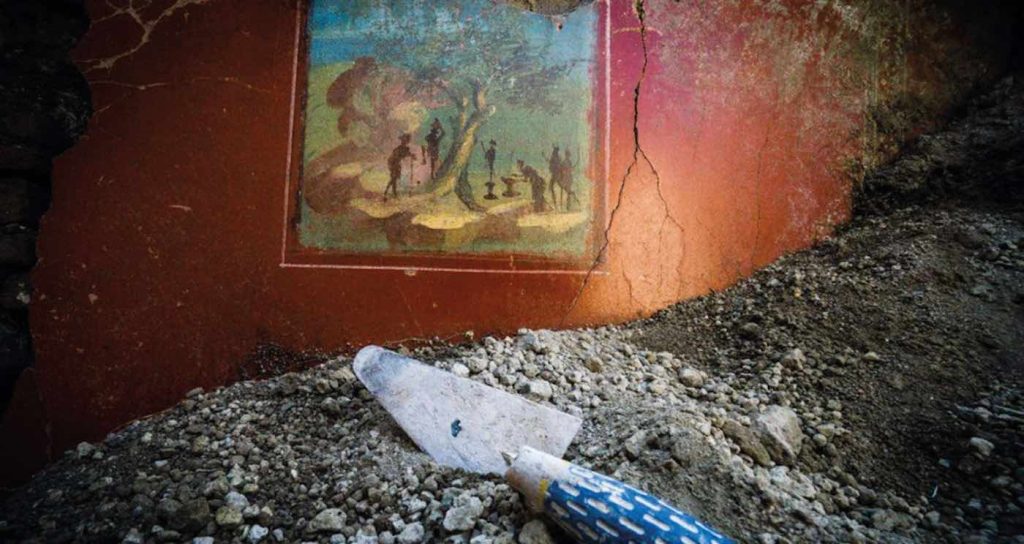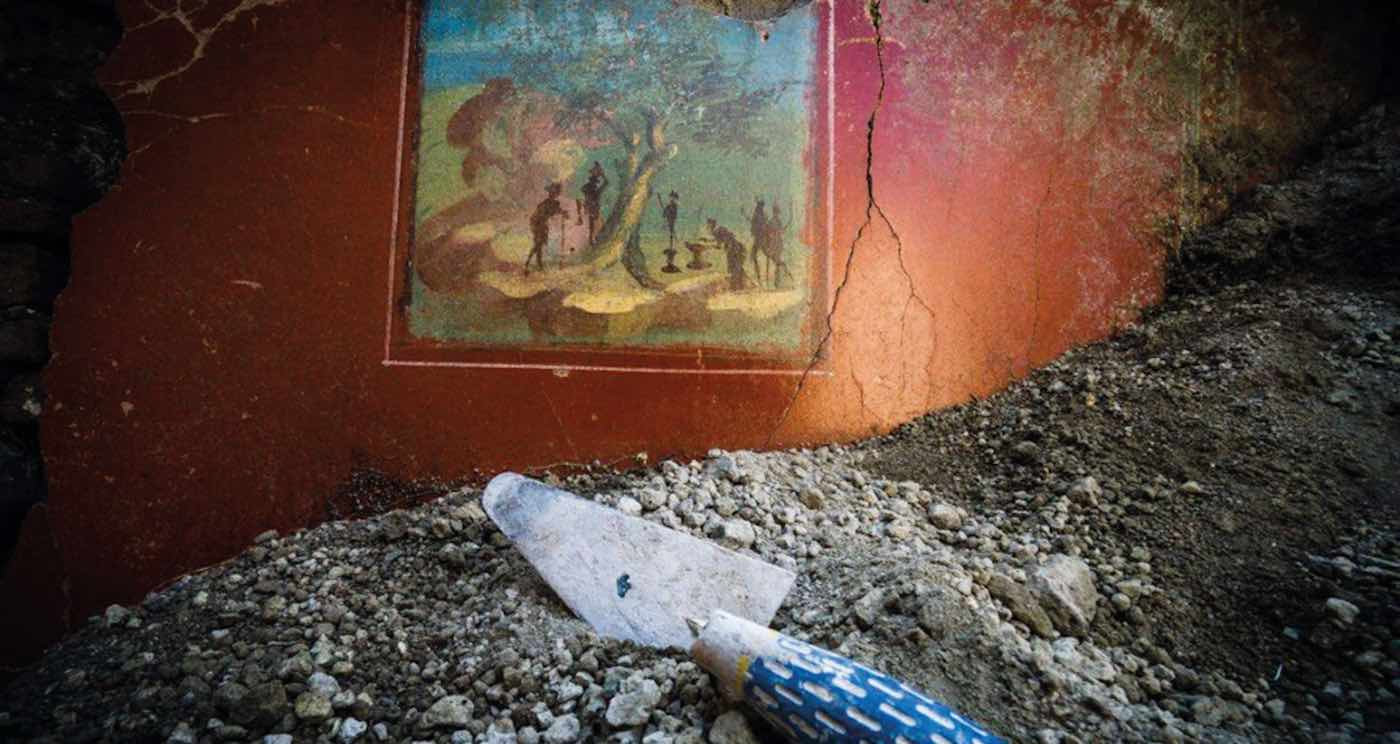
Pompeii has captured the world’s attention for years, and few sites have revealed more about the life and luxuries of the Roman Empire than it has.
Recent clues—scrawled onto walls by ne’er-do-wells, and others uncovered in the ash, are changing the record about exactly when the city met its unfortunate end at the hands of the volcano.
A worker wrote a joke with charcoal onto the wall of a building one day in CE 79, more or less reading, “he ate too much.” However this everyday bit of time-killing was made with a date: October 17th, two months after the long-suspected eruption of Vesuvius.
It’s believed that Pompeii was buried on August 24th, based on a letter sent by Pliny the Younger, who, standing on the other side of the bay of Naples, witnessed the destruction from a safe distance.
This new date is thought to be pretty accurate, as the delicate charcoal which wrote the graffiti would not have lasted long in the sea air. Instead the volcanic ash preserved it.
MORE: Robotic Dog Designed in Boston Patrols the Ruins of Pompeii to Help Preserve Relics
There are other recently-uncovered reasons to believe the eruption took place later in the year, including charred fruit from autumn harvests, bodies buried in thick cold-weather clothing, outdoor braziers still filled with firewood, sealed amphorae with wine—again from the harvest, and a coin that was not minted before September.
Pliny’s account from the advancing ash is harrowing, and helps us imagine the gravity of the eruption as it spread across the region. He wrote the day after the eruption:
“From the other direction over the land, a dreadful black cloud was torn by gushing flames and great tongues of fire like much-magnified lightning. The cloud sank down soon afterwards and covered the sea, hiding Capri and Capo Misenum from sight. My mother begged me to leave her and escape as best I could, but I took her had and made her hurry along with me. Ash was already falling by now, but not very thickly. Then I turned around and saw a thick black cloud advancing over the land behind us like a flood. ‘Let us leave the road while we can still see”, I said, “or we will be knocked down and trampled by the crowd’.
MORE: Greece Opens World’s First Underwater Museum Around a 2,400-Year-old Shipwreck
We had hardly sat down to rest when the darkness spread over us. But is was not the darkness of a moonless or cloudy night, but it was just as if the lamps had been put out in a completely closed room. We could hear women shrieking, children crying and men shouting. Some were calling for their parents, their children, or their wives, and trying to recognize them by their voices. Some people were so frightened of dying that they actually prayed for death. Many begged for the help of the gods, but even more imagined that there were no gods left and that the last eternal night had fallen on the world.”
Still, just one-third of Pompeii has been excavated. Much of the last two-decades has been restoration work, part of the Great Pompeii Project. There’s likely so much more to be discovered.
UNEARTH Fascinating Finds Like This Story; Share It With Mates…




















